

Explore the history, culture, people and beautiful landscapes of Vietnam on the 63Stravel travel app
Download the 63stravel app

SKDS - Possessing a unique architecture and a prime location in the middle of a "rose city", Dong Hoi Citadel has many cultural and historical values and attracts the attention of tourists.
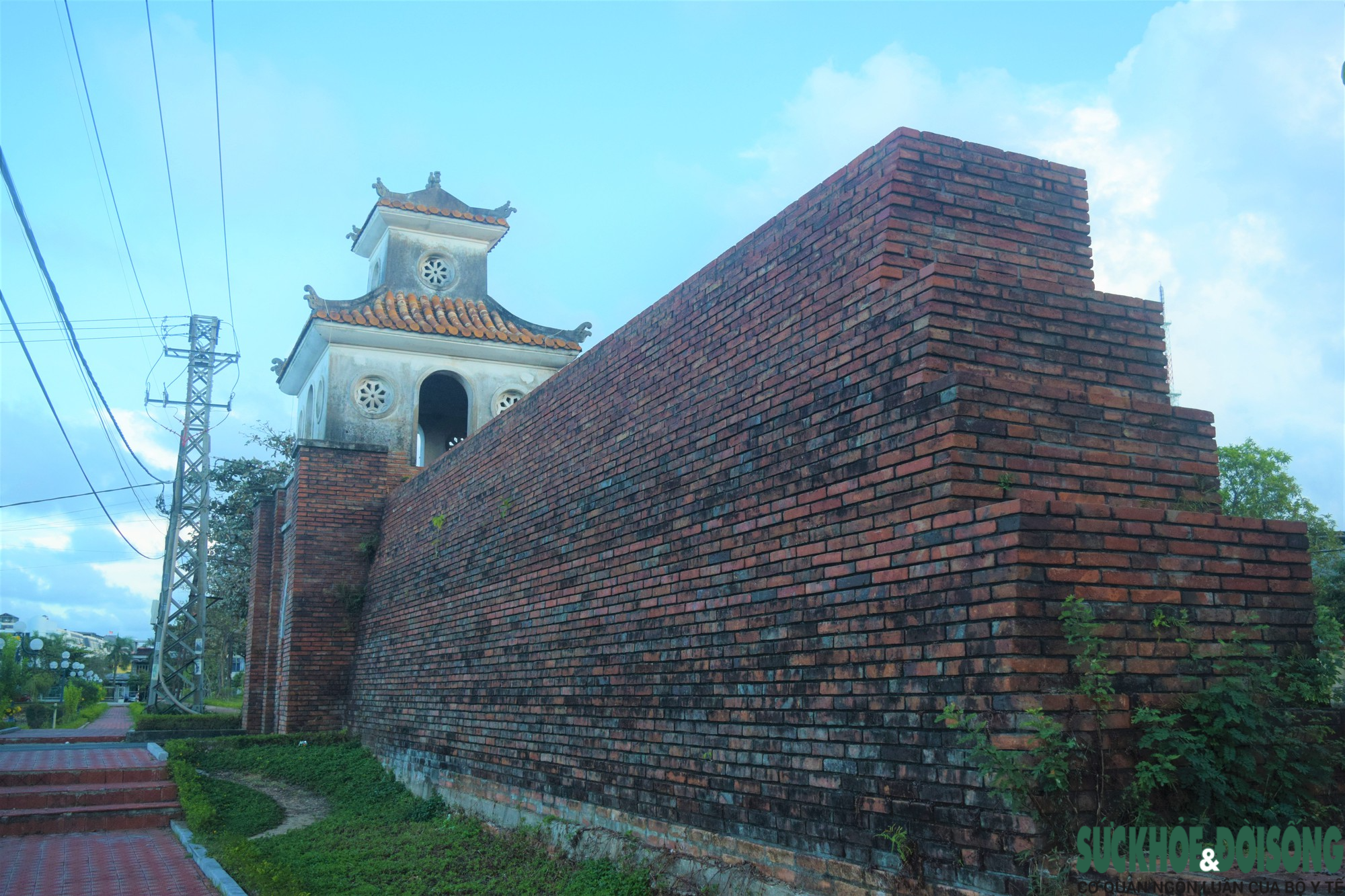
Dong Hoi ancient citadel is a part of the overall military historical monuments of Dong Hoi in the Trinh - Nguyen period, built on a key land of the trans-Vietnam route from North to South.
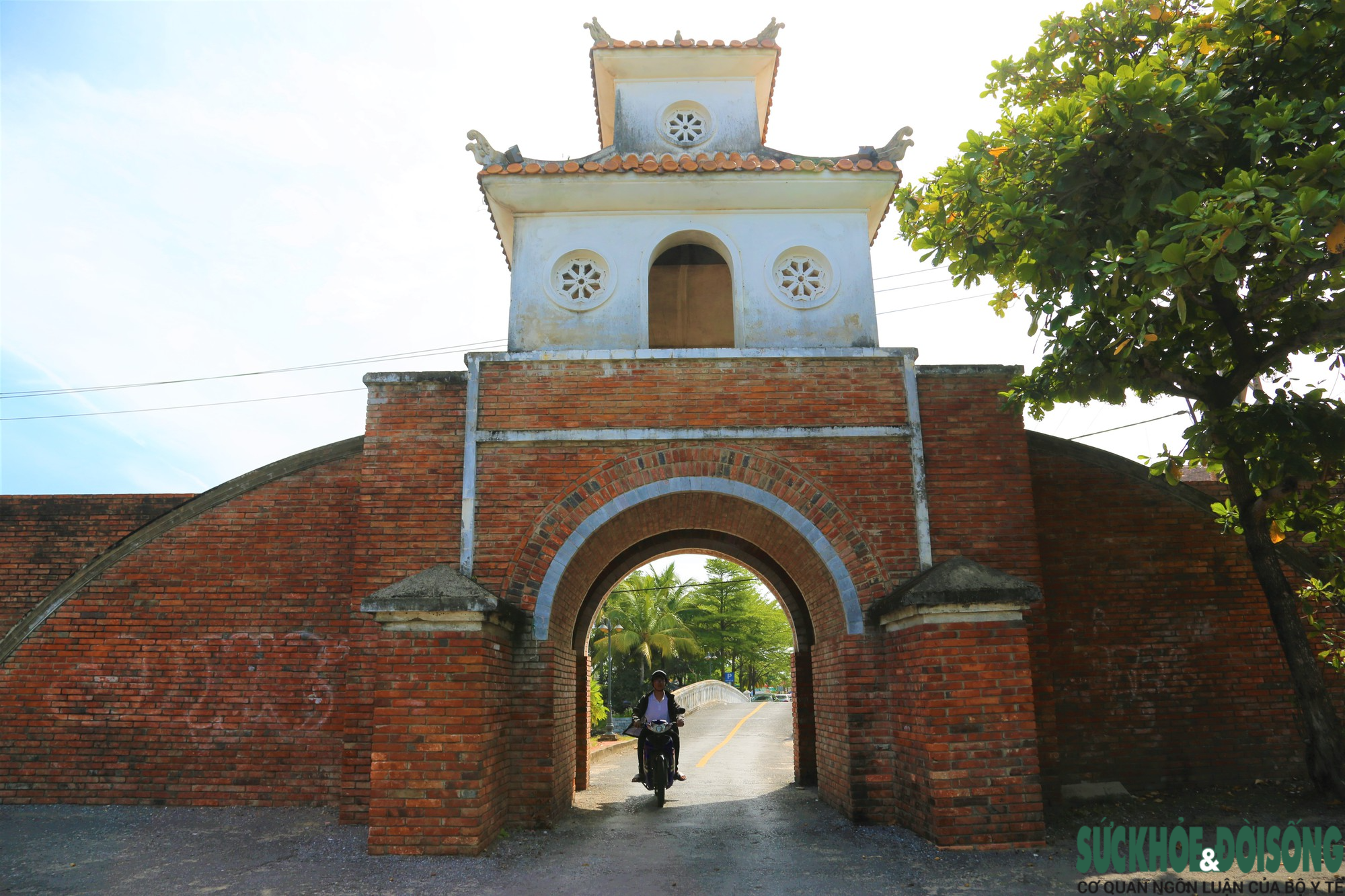
Dong Hoi Citadel was started construction in the 10th year of Gia Long (1812). The citadel was built on the ancient land of Lord Nguyen Phuc Nguyen for the construction of Tran Ninh fortress (also known as Dao Duy Tu fortress in 1631) and Dong Hai fortress (1774) during the Trinh - Nguyen war.
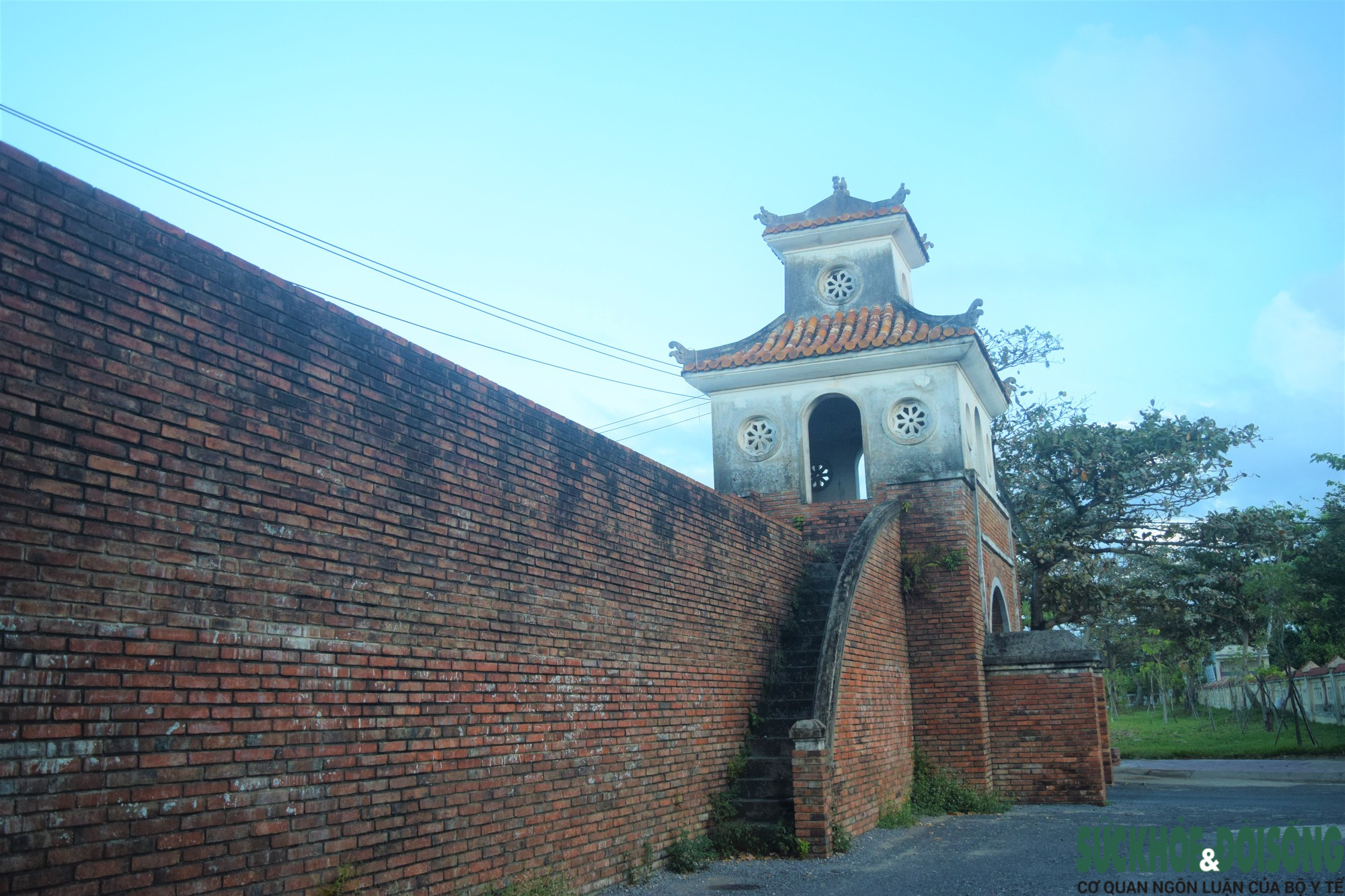
At first, the citadel was built of earth, in the reign of King Minh Mang, the citadel was redesigned and built with bricks in 1824 in the form of a military citadel.
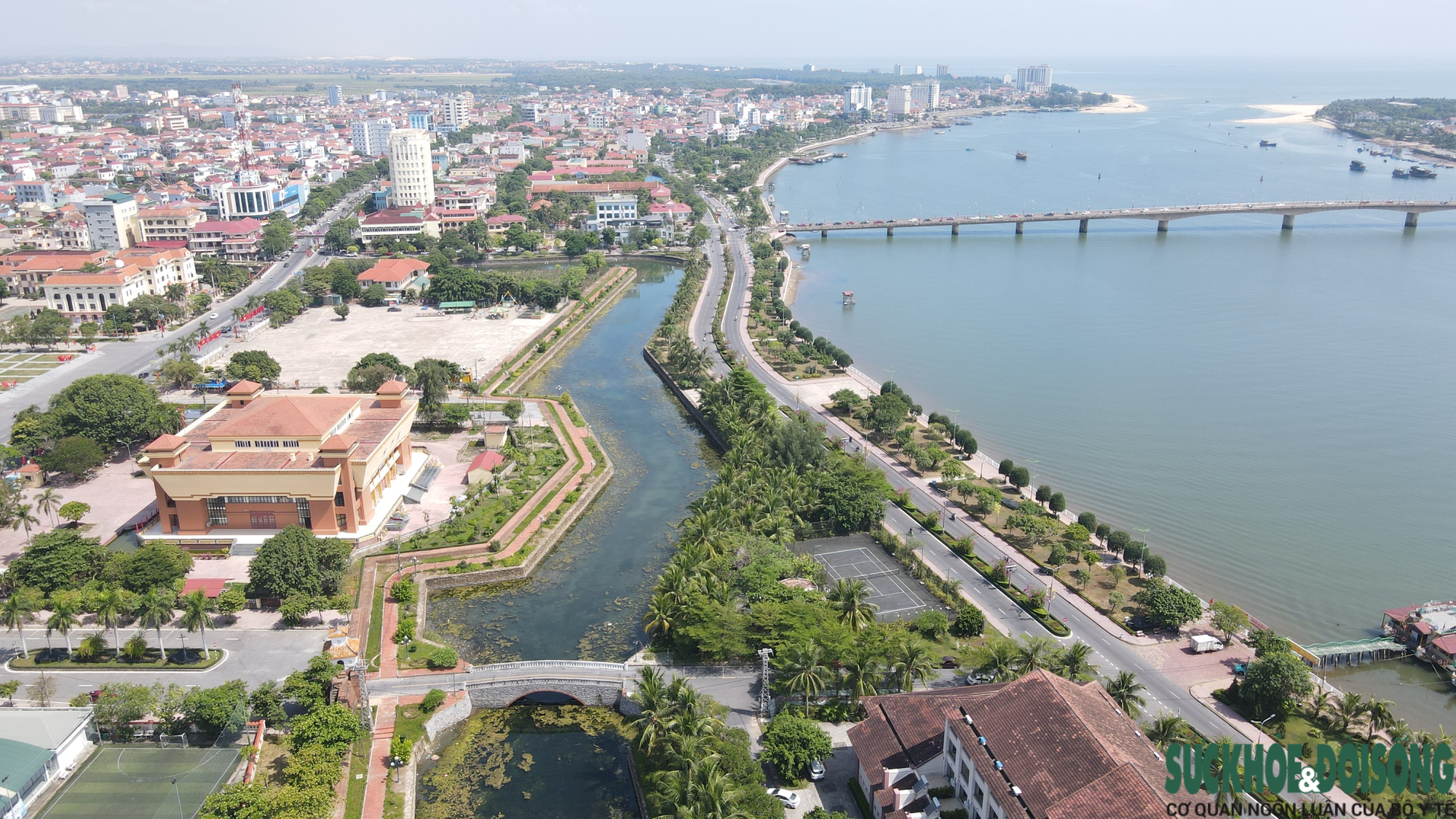
The ancient citadel was built near Nhat Le estuary. The citadel has a circumference of about 1,860m, is about 4m high, the wall is 1.35m wide, and the foundation is 2m thick. Around there is a 16m wide moat to protect the citadel.
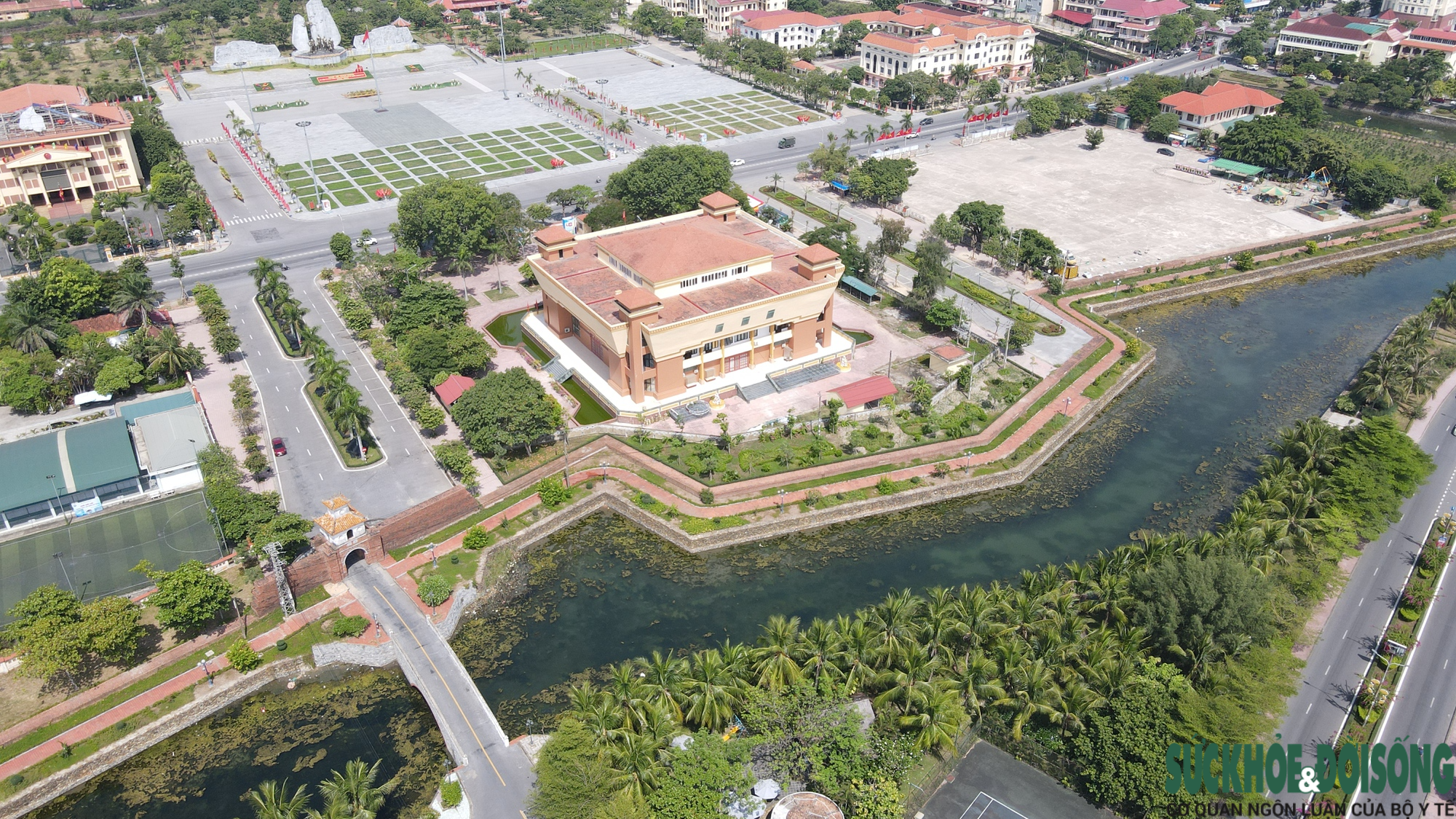
Viewed from above, Dong Hoi ancient citadel has a symmetrical architecture, with four corners of the fortress protruding "starch teeth" like a flower surrounded by brick walls. Four small wings and four large wings are arranged in the direction of Southwest - Northeast and Northwest - Southeast.
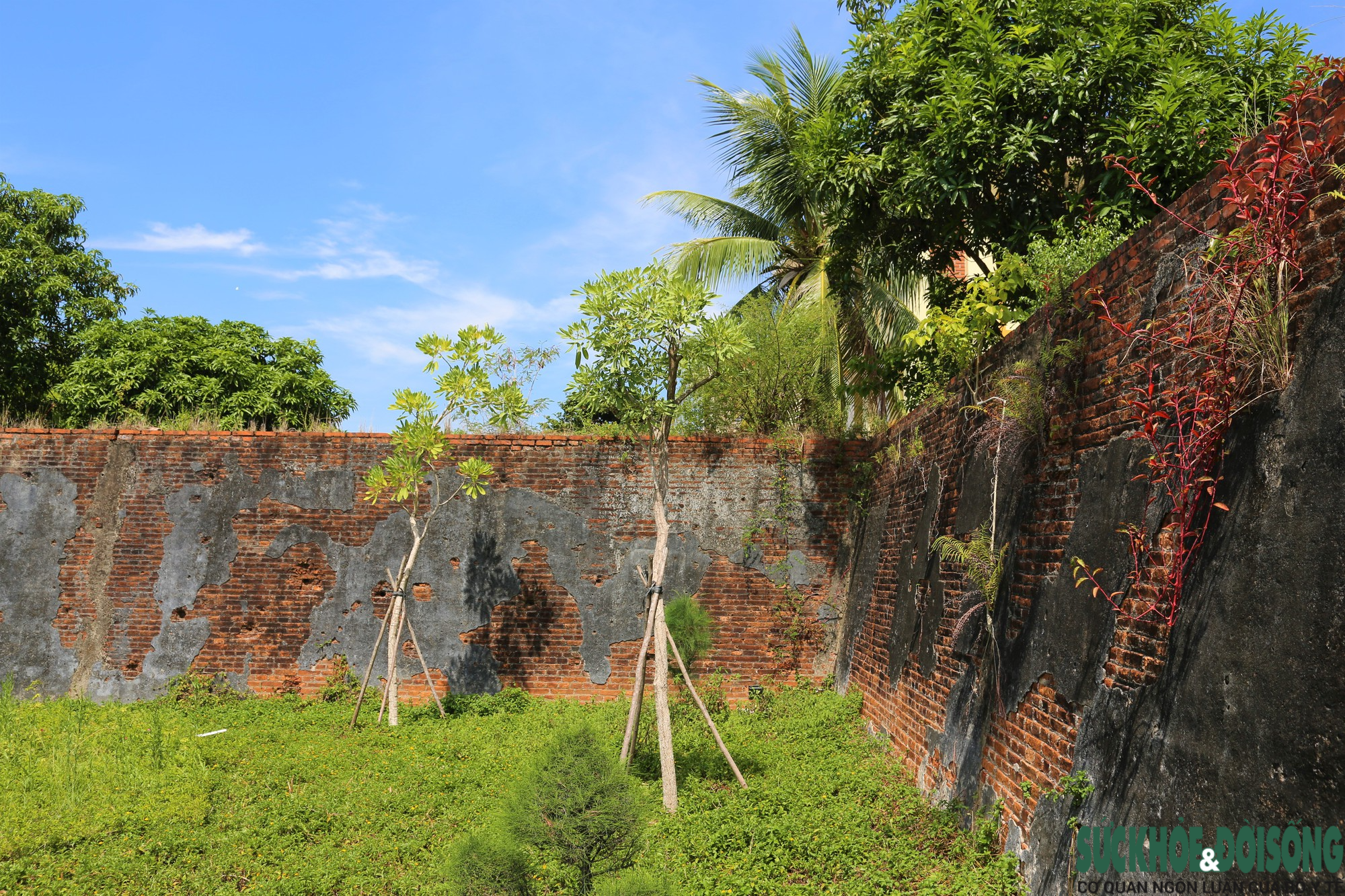
Throughout the length of the country's construction and defense, this place was a battleground marking many important historical events, including the victory that ended more than 200 years of Trinh - Nguyen civil war. In particular, the ancient citadel is also the front line accompanying the victories of the people of Quang Binh in the two resistance wars against the French and American of the nation.
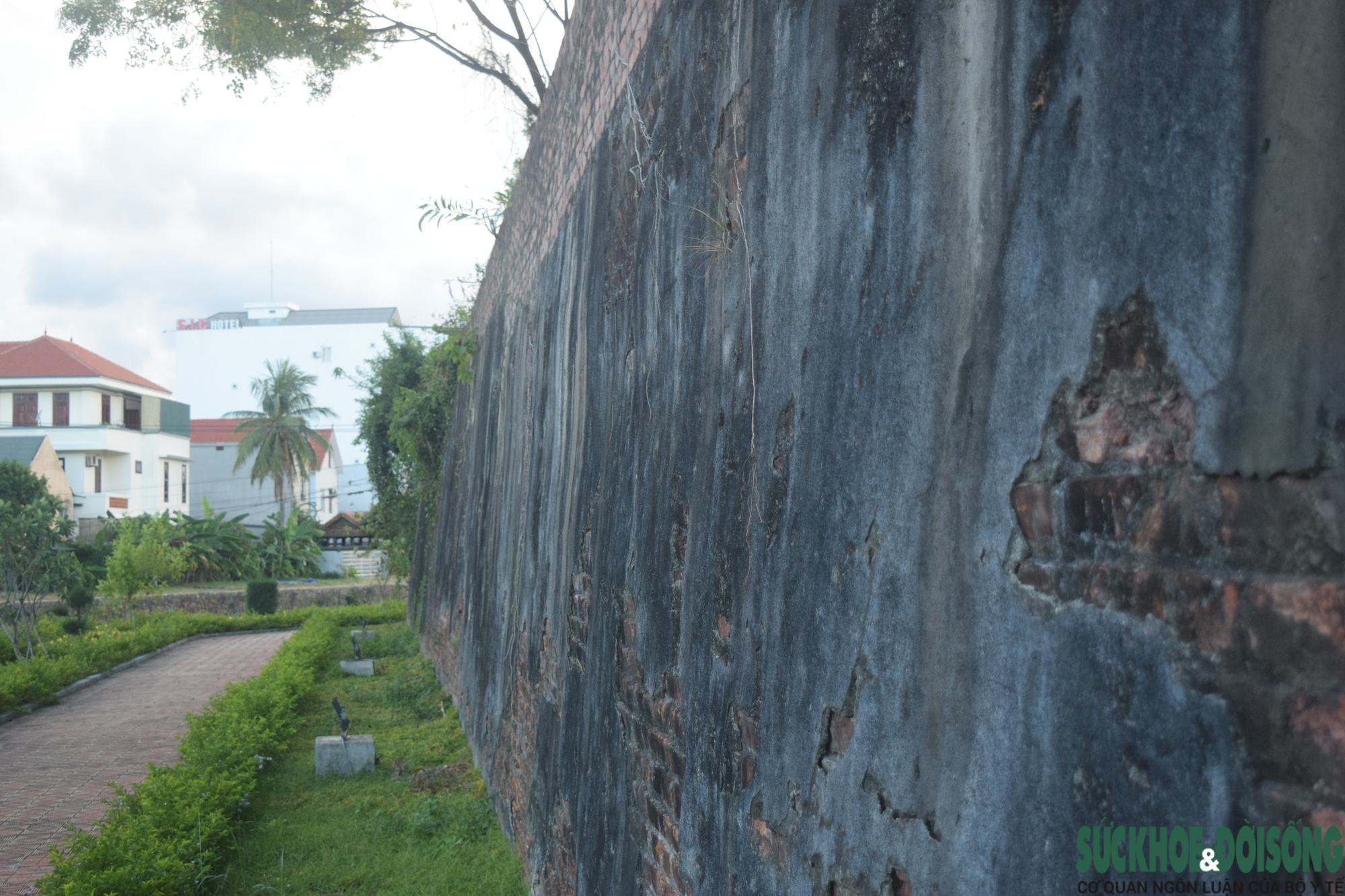
In 1885, the French colonialists attacked the Central region, and Dong Hoi Citadel became a place of defense and counterattack of the Nguyen army. On July 19, 1885, the French colonialists attacked Dong Hoi Citadel for the second time and the citadel fell into French hands.
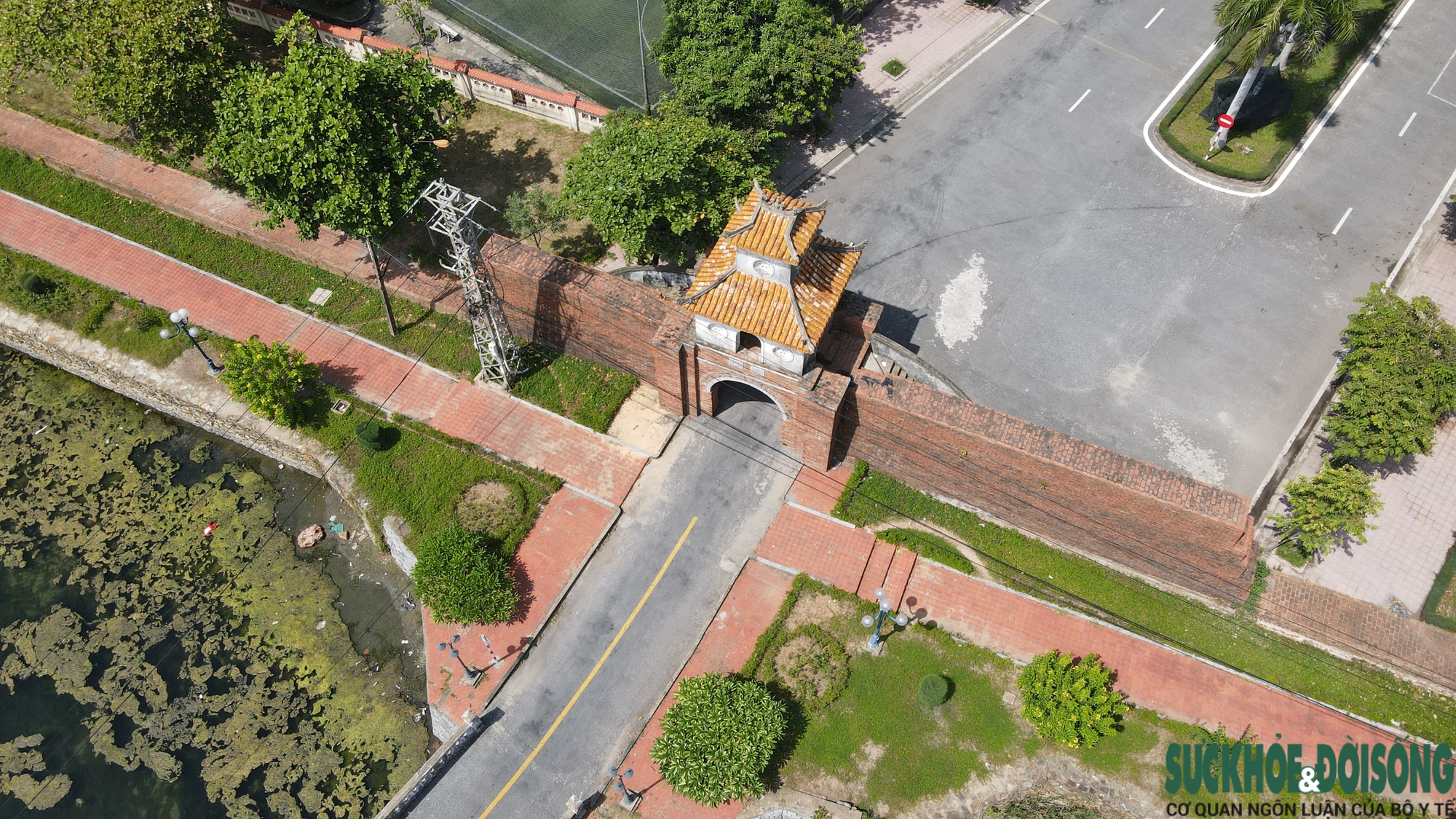
Much of Dong Hoi citadel was destroyed during the French colonial period. The condition of the citadel continued to deteriorate during the anti-American resistance war. The enemy poured thousands of tons of bombs on this land, destroying part of the ancient citadel in order to prevent reinforcements from the North's rear on the southern battlefield.
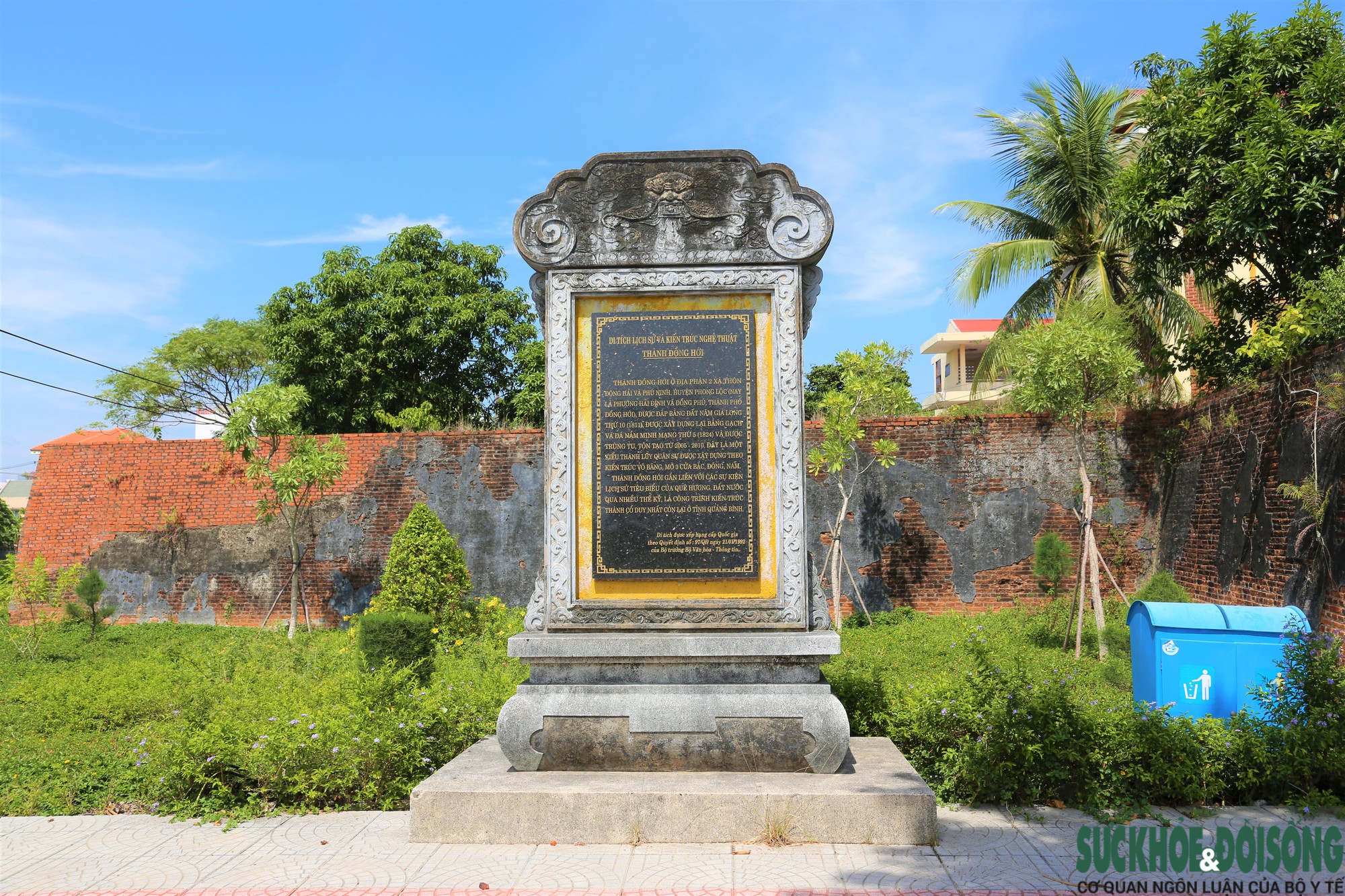
On January 21, 1992, Dong Hoi Citadel was recognized as a national historical and cultural relic. In August 2005, Quang Binh province restored the citadel with an estimated total of 31 billion VND.
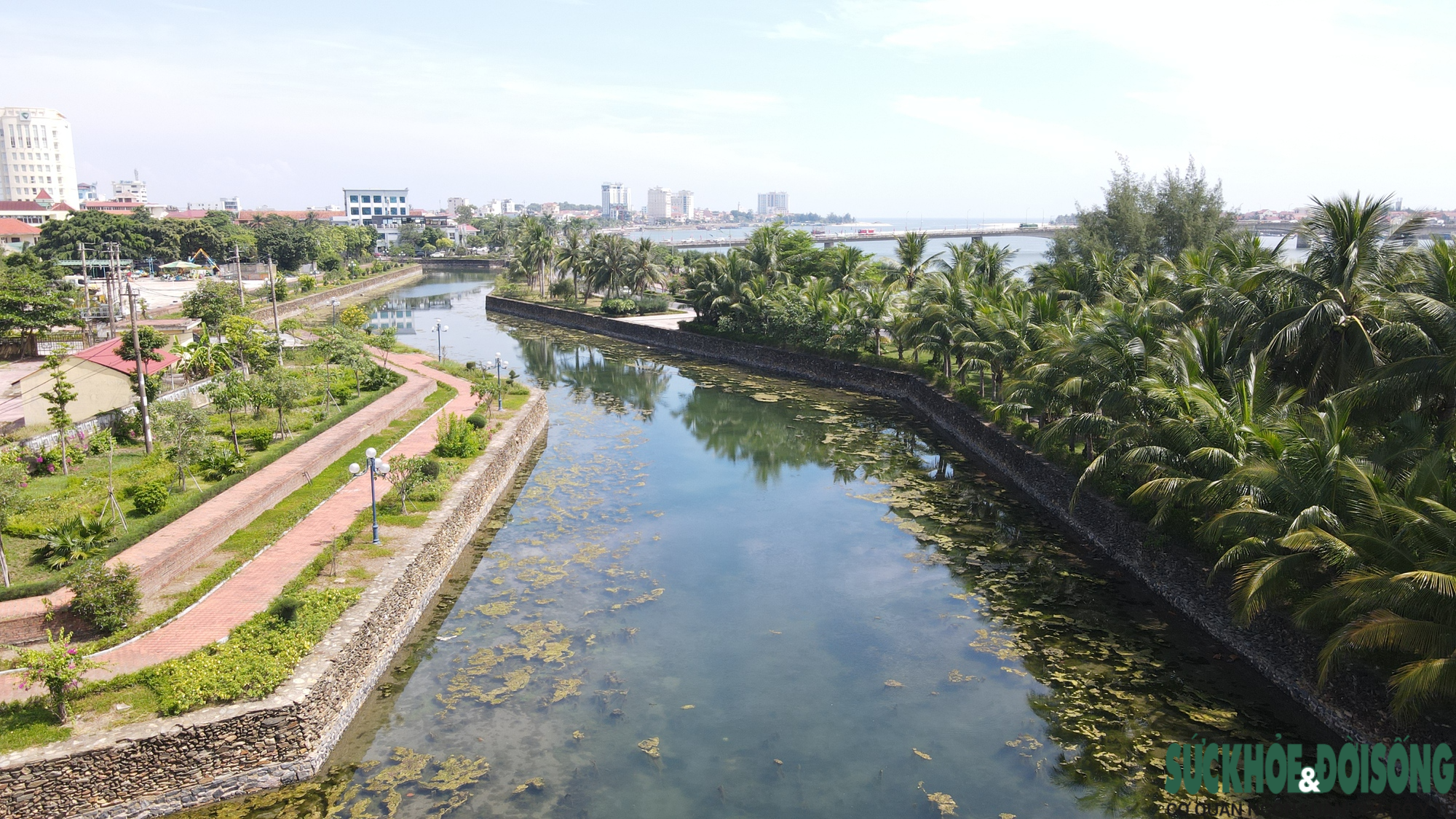
Today, Dong Hoi ancient citadel is located in the city center, preserved and preserved by modern buildings with harmonious architecture.
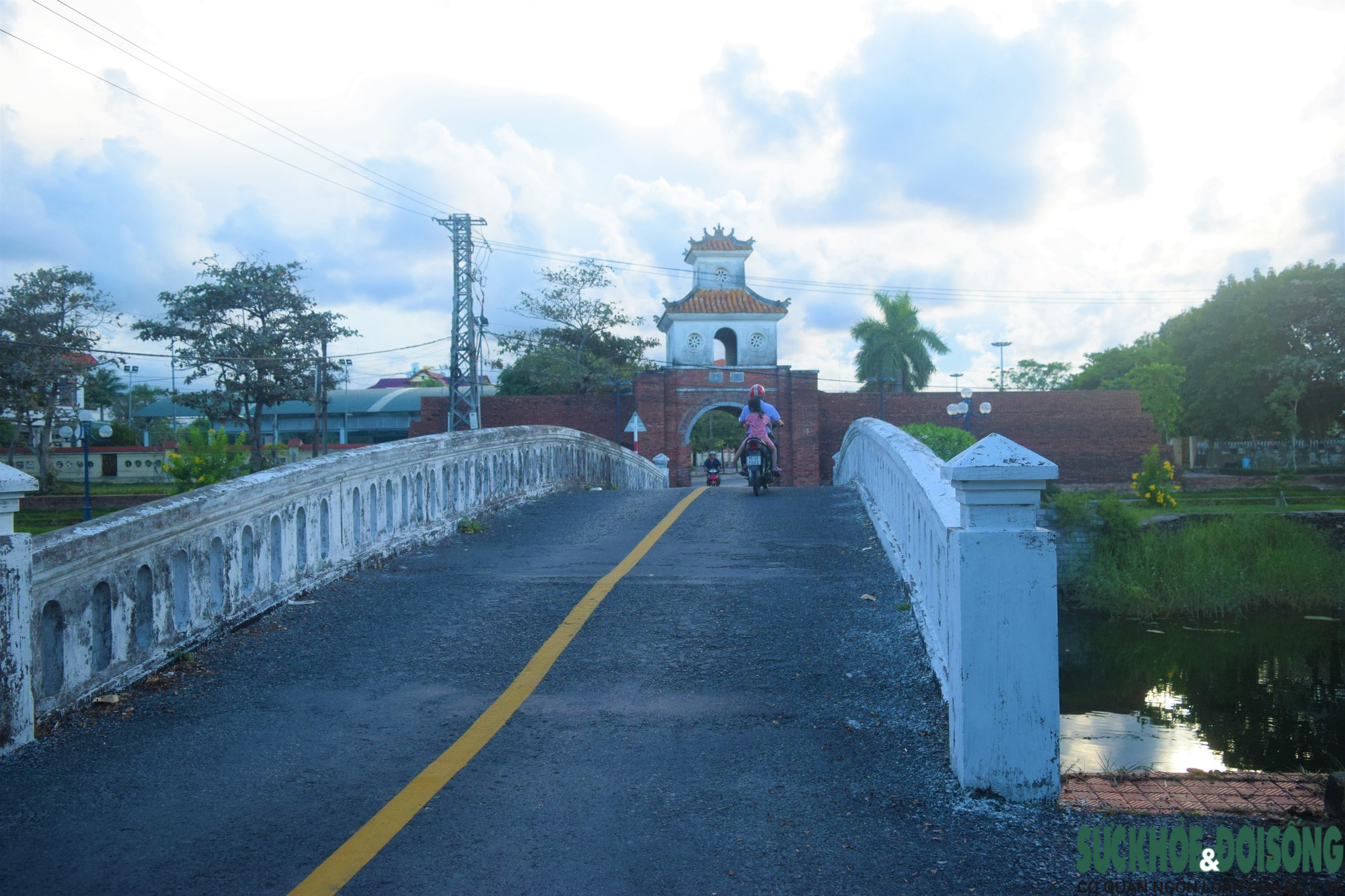
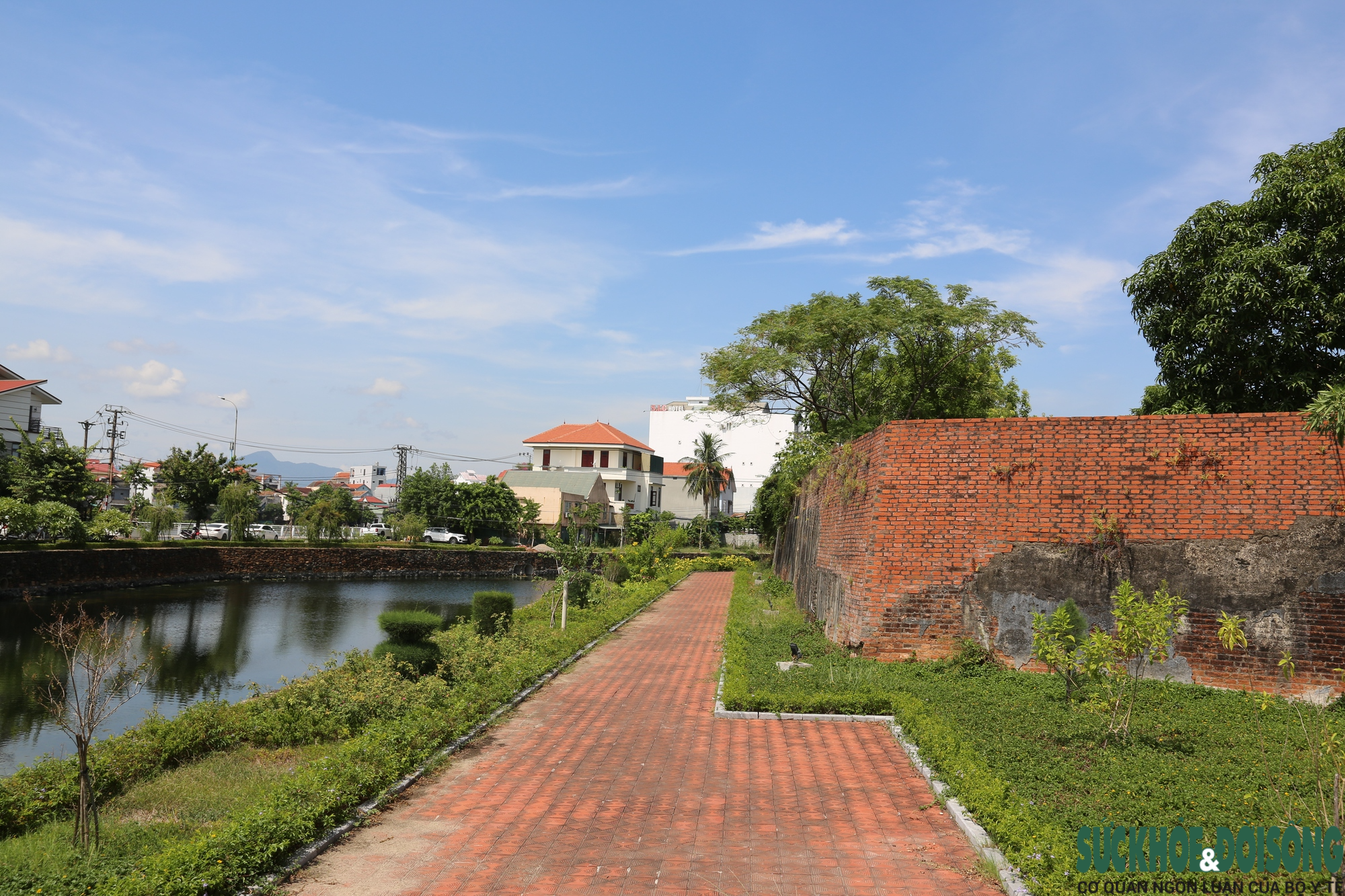
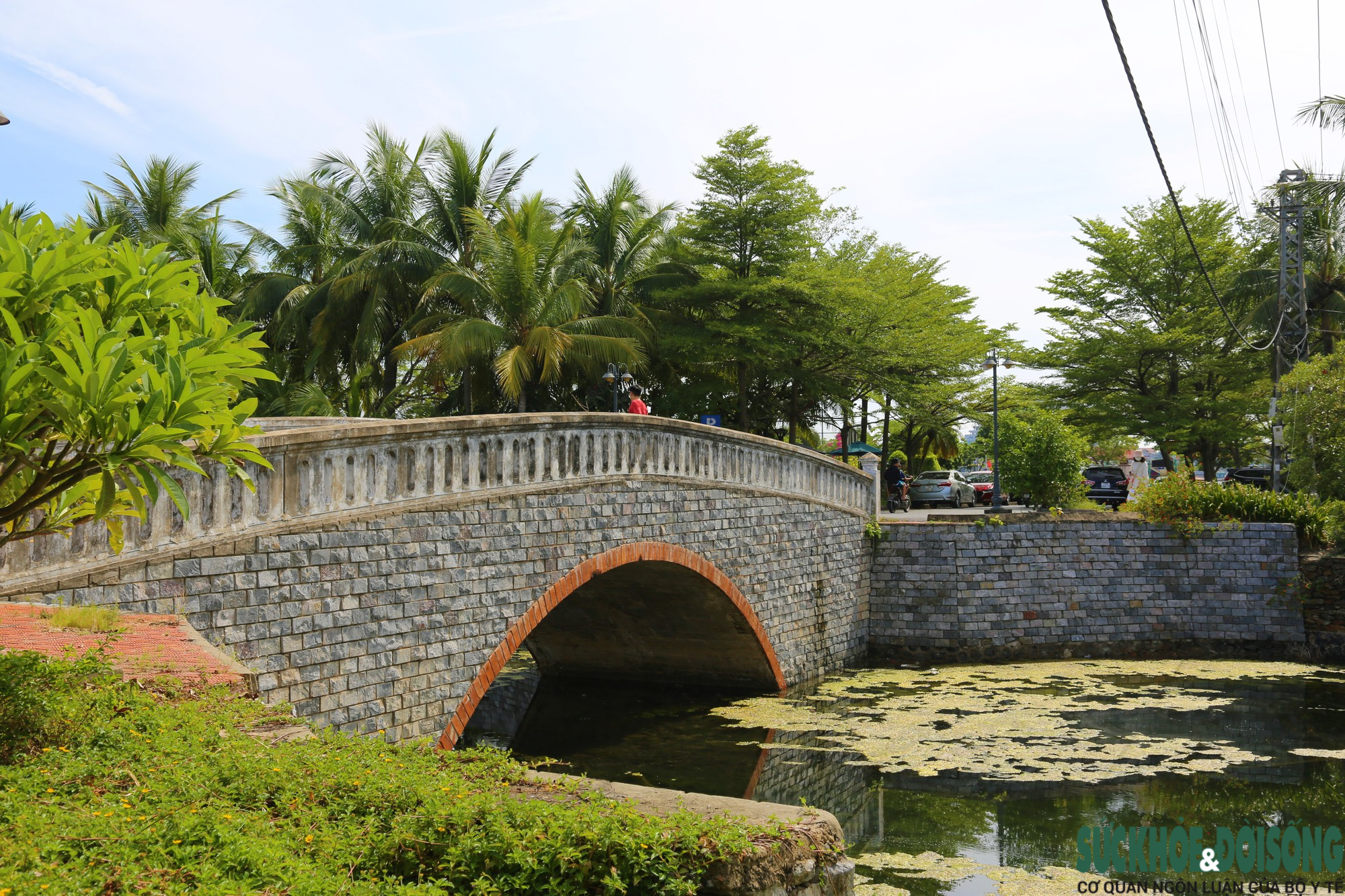
The city wall was restored solidly with red bricks. The road surrounding the moat and citadel is paved with bricks, with a system of trees and lights highlighting the architecture. The clear blue canal harmonizes with the landscape and regulates the climate of the area.
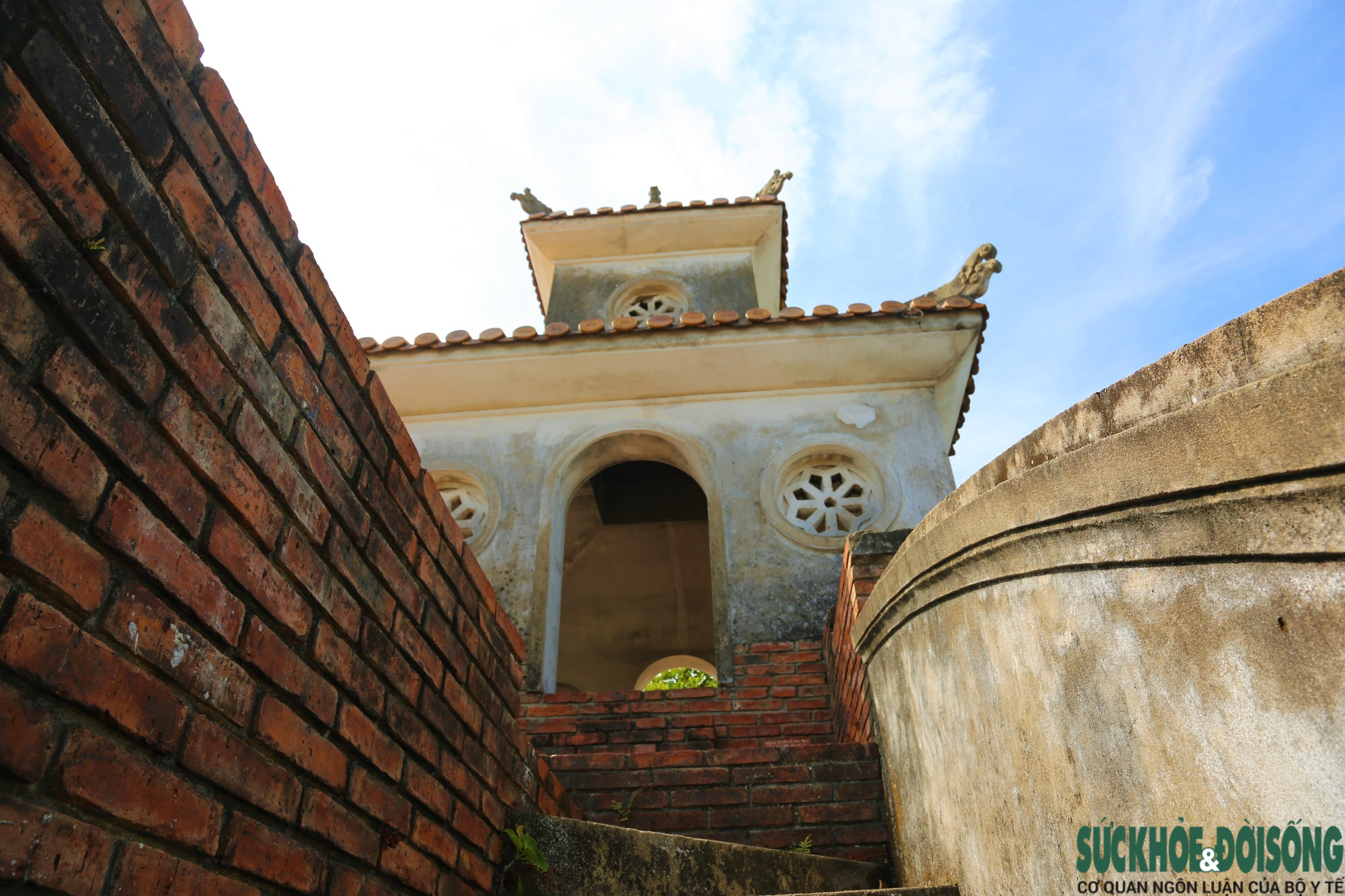
Dong Hoi citadel not only has the appearance of a military defense construction with a deep moat, but with the East gate overlooking the Nhat Le River with a curved arch bridge, it has become a tourist attraction when coming to Dong Hoi. Nhat Le-Dong Hoi-Quang Binh.
Quang Binh 1789 view
Update day : 22/08/2023
Coming to Bao Ninh, you will be immersed in an extremely open, wild and quiet natural space. You will only hear the whispering waves and the whirring wind in your ears without being crowded. like other key beaches. In addition, around are green coconut palms swaying in the wind and scenes of simple activities of people in Bao Ninh fishing village. You should come here in the early morning to catch the brilliant sunrise on the sea, when the first rays of the day begin to appear in the distance, the illuminated sea surface becomes beautifully iridescent. Or you can also walk barefoot on the beach in the late afternoon, when the sunset closes the day and the fishing boats return after a day at sea. Bao Ninh Beach is right next to Nhat Le beach, so if you want to visit Nhat Le, you just need to go through Nhat Le bridge to get there. In addition, standing on Nhat Le bridge and looking down at the water and sea surface of Bao Ninh is extremely beautiful and peaceful. After the morning watching the sunrise on the sea, you can also move to Bao Ninh square located right on the beach with extremely attractive and attractive entertainment activities. If you are lucky enough to come during the festival season, you can also witness the fishing and harvest festival that the fishing village people set up. Some attractions around Bao Ninh beach that you can visit are the ancient Citadel relics, Ca Ong temple or Mother Suot monument, Quang Binh Quan, General Vo Nguyen Giap's tomb or especially if there is one. Maybe Son Doong cave... Historical sites around this area will be an opportunity for you to gain more historical knowledge as well as social understanding, so you can learn more deeply about the war years. The arduous struggle of our army and people.
Quang Binh 1900 view
March to November
Mooc Stream is located in Phong Nha Ke Bang National Park, about 60 km from Dong Hoi city. To get here you can follow the Ho Chi Minh Trail, the stream flows into the Con River towards the delta. At Khe Gat intersection, turn west and go about 5 km to Mooc stream. The stream is covered with vast green forests, the climate is cool, and the air humidity is high. Summer travel here is very suitable, you will feel like you are lost in a giant natural air conditioner. Mooc Stream in Quang Binh originates from a large lake about 80 - 90 square meters wide, downstream the stream flows into a large river. There are many rugged rocky beaches here, creating an interesting landscape. Along the stream, the shade of trees spread out into the middle of the stream like umbrellas above the water. Trees that grow well help retain water and humidity, making the air cool and fresh. Mooc Spring appears in the wild natural landscape of deep forest, tourists seem to be overwhelmed by the beautiful scene before their eyes. Each stream, tree branch and green grass is full of life, the tingling sound of nature blends with the sound of flowing water to create a lively harmony. On this S-shaped strip of land, there are places where people and nature can harmonize so closely. You can immerse yourself in the space of the mountains and forests to enjoy the feeling of relaxation, stretching all your senses to hear, to see, to feel the fragrance of life. Coming here, you can also participate in many entertainment activities, there are many thrilling games, requiring the player's flexibility and dexterity: Kayaking, hanging bridge, zipline... Sitting on a kayak, skillfully controlling the oar along the water flow to the fast-flowing sections, the player must brace themselves to keep the oar going through the strong current. The ticket price for kayaking at Nuoc Mooc spring is about 50,000 VND per session. Going on the suspension bridge is for those who are not afraid of heights. Take each step carefully on each wooden slat of the suspension bridge if you don't want to fall into the water. Not only are you careful, you also have to be very skillful to participate in this entertainment. Many rustic dishes are served here made from native ingredients: Stir-fried wild vegetables with garlic, grilled eel, grilled chicken, porridge soup. Sitting on thatched huts enjoying dishes brings a very new feeling. In the summer, Mooc stream truly becomes a wonderful ecological area, with cool spring water and fresh scenery. Going here with friends for a picnic on weekends or holidays will be a great idea, the wild nature will give you memorable photos. The tourist destination is quite new so everything seems "intact", seemingly separate from outside life. In addition, you can visit places near Mooc stream such as Chay river and Dark row. Dark Cave has deep underground streams flowing through creating air conditioning. Inside there are many multi-shaped stalactites and stalactites with almost no light, complete darkness. If you turn off the flashlight, it feels like everything is swallowed by darkness, the eyes are filled with suffocating blackness.
Quang Binh 1767 view
March to August
Famous as one of the world's largest natural wonders in Vietnam today, located in Quang Binh province and chosen by many tourists. This place not only contributes greatly to preserving nature, flora and fauna, but also creates an impressive tourist destination for tourists right from the first visit. Phong Nha Ke Bang National Park is located about 45 km from Dong Hoi city center. With a structure consisting of two main parts: Phong Nha cave and the majestic Ke Bang limestone mountain range many years old. Brings the feeling of being lost in a separate sky, both wild and imbued with the natural beauty of an attractive ecosystem. Located in Quang Binh province, a city in the Northern region, it has a tropical monsoon climate with two distinct dry and rainy seasons. To have a convenient trip to Phong Nha Ke Bang National Park, you should choose the time from April to August. At this time the weather is dry, little rain and beautiful sunshine, suitable for sightseeing and activities. interesting. As for the period from September to December, the weather is prone to rain and even storms. If you visit at this time, it will be quite disadvantageous to travel and cause many potential dangers. Besides, from January to March the high water season also causes disadvantages when visiting Phong Nha cave and other cave systems. Currently, choosing a hotel when visiting Phong Nha Ke Bang National Park is quite popular among tourists. Because this also affects the tourism process more or less. If you have questions about choosing a Quang Binh hotel, you can rest assured because this is currently a developed tourism province. When coming here, it is not too difficult to choose a hotel that suits the needs, interests and financial capabilities of visitors. To be more proactive about your time, you can choose to consult and book hotel rooms in advance at websites, or through the convenient Traveloka app. Referring to one of the attractions not to be missed when coming to Quang Binh national park, Phong Nha cave is known as "Thien Nam's first cave" with its majestic and wild beauty. After following the clear blue water, you will reach the cave entrance with a height of 10m, then proceed to explore the 8,000m long cave system, with 12 different large and small caves. Bringing unexpected experiences to visitors while visiting the national park. Through many changes, golden sand beaches, blue underground lakes and impressive stalactites have formed inside the cave. It all seems to create a vivid picture created by nature over hundreds of millions of years. To get in, you need to buy a ticket for about 120,000 VND/adult, free for children and rent a boat for about 550,000 VND/12-seat boat. Possessing an area of more than 40 hectares, the botanical garden is a diverse ecosystem and is also a conservation area not to be missed when visiting Phong Nha Ke Bang national park. Here, you can experience the process of Trekking to explore and check in to Thac Gia, Vang Anh Lake, and animal raising area. In addition, you can also visit the model exhibition house to see rare animals and plants. The ticket price to enter the botanical garden will be about 40,000 VND/adult and 20,000 VND/child. This promises to be an interesting and memorable experience for nature lovers who always want to discover the beauty and wonder of flora and fauna. Thien Duong Cave is known as the longest dry cave in Asia, with a total length of 31.4km, naturally formed in a limestone complex and surrounded by pristine, rich primeval forest. To reach the cave, you need to pass 524 wooden steps, then comfortably enjoy the cool atmosphere and the magical beauty of the impressive stalactites. Therefore, this place has become an indispensable tourist destination when coming to Phong Nha Ke Bang national park.
Quang Binh 1991 view
From April to August
When coming to Quang Binh, you must definitely visit Bai Da Nhay - located at the foot of Ly Hoa pass in Thanh Trach area, Bo Trach district, Quang Binh province. With a long coastline, fine golden sand and blue sea water, it creates a beautiful "background" with no dead corners, suitable for virtual living. The best time to go to Quang Binh is from the first months of the year until May (according to the solar calendar). June, July, and August are quite sunny and hot, while September, October, November, and December are rainy and cold seasons. You can rent a motorbike in Dong Hoi to go to Da Nhay beach, which is also quite ok. From Dong Hoi City, you run towards Dong Hoi Airport and then go straight about 25 kilometers to get there. When you arrive, park your car at a convenient restaurant to eat lunch. The first impression that appears when coming to Da Nhay Beach is that the beach is clean with little trash, the sea water is clear and blue, and the air is cool. You walk a bit to reach the rocky beach. Attached is a set of stairs to climb to the top. Stand from above and look down to see the panoramic view of Da Nhay Beach. Rest assured that in Da Nhay Beach, there are many shops and restaurants close to the beach, with very reasonable prices, so you can eat and drink to your heart's content, always with fresh seafood. After finishing eating, you can rest in the hammocks under the hut and enjoy the cool sea breeze, which is also not a bad idea.
Quang Binh 1670 view
From January to December
Located in Tho Son village, Quang Trach district, Quang Binh province and about 3km from National Highway 1A, Vung Chua - Yen Island is known as the resting place of the heroic general of the nation Vo Nguyen Giap. This area has an area of about 10 hectares and is located right at the foot of the majestic Ngang Pass. Vung Chua is a clear blue beach with long stretches of white sand and surrounded by a peaceful scene of endless green forests. Vung Chua faces the East Sea but is quite sheltered from the wind, so this place is said to be a land with a quite prime location. Yen Island is a small island about 1km from Vung Chua shore. If you go by boat, it will only take about 20 minutes to get here. Many people commented that Yen Island is like a screen emerging in the middle of the sea with the belief that this place will guard the land and sea, protecting human life. Vung Chua - Yen Island has now become a pilgrimage destination attracting many tourists to visit and burn incense to commemorate the heroic general every year. Local people have recounted that in the past this land was called Hon Nom based on the direction calculation. However, later a company brought the bird's nest here to raise it to exploit the bird's nest, so from here a lot of bird's nest came to live. The name Yen Island, Quang Binh, also came from there. So where does the name Vung Chua come from? According to local people, in the past there was a large pagoda in this area, but now through ups and downs of time, only traces of the pagoda's foundation remain, but the name Vung Chua comes from that. This area is also surrounded by three islands: Hon La, Hon Gio and Hon Nom, forming a three-legged triangle so it is quite airtight so ships often anchor when there is a storm. In addition to the tomb of General Vo Nguyen Giap, many people may still not know that on the island there is also an ancient tomb that has been passed down orally from people as the tomb of famous general Tran Dat, who had meritorious service in the Lam Son uprising against enemy from the North with Le Loi. After learning more about the history books left behind, we learned that the family of famous general Tran Dat was very famous in the area because there were many people who were awarded the title of marquis, duke or academician... However, the church they are currently in Thuan Bai village, Quang Thuan commune, Quang Trach district. So Quang Binh is honored to welcome two generals about 500 years apart to rest here. The grave of General Vo Nguyen Giap is located on the shore, at a 110m high point on Dragon Mountain, overlooking the sacred Yen Island, and the grave of famous General Tran Dat, who was instrumental in defeating the Northern invaders and saving the people, is also nearby. That area makes Vung Chua - Dao Yen more majestic.
Quang Binh 1803 view
From January to December
Located in the center of the Phong Nha - Ke Bang National Park relic complex, with a length of more than 5km, a width of more than 200m, a height of up to 150m and it is estimated that it can be completely "tucked into" a skyscraper with about 40 floors, Son Doong Cave (also known as Son Dong) is the largest natural cave in the world and is a pride of Vietnamese people in general and Quang Binh people in particular when being discovered. Nature has bestowed upon it a priceless masterpiece of humanity. Because of this majesty and magnitude, people often refer to Son Doong as the "Great Wall" of Vietnam. To get to Son Doong cave, it will take you about half a day to go through a forest and wade through a small river. Reaching the cave entrance, every cold wind blowing in the cave will melt away all the fatigue of the arduous journey of "crossing the forest and wading streams". Not only will you be amazed by the vast space of the cave, you will feel extremely excited by the magical mystery hidden behind the magical thick fog in the cold winds. Not only famous for its giant size, Son Doong cave also has a rich flora and fauna ecosystem. Son Doong is home to many animals and is also a diverse vegetation with hundreds of different plant species, created by a fast-flowing underground river and partly exposed to sunlight. The cave collapsed. People have even developed a pristine vegetation cover without human footprints on a vast primeval tropical forest like a real 'Eden' on earth. Son Doong Cave attracts tourists because of its geological diversity in the special terrain of underground rivers and large caves. Exploring Son Doong cave, you will admire the system of limestone, stalactites, giant "pearls" and stalagmite columns up to 70m high created millions of years ago. With the purpose of preserving and preserving the beauty of the cave as well as ensuring the safety of visitors, Son Doong cave has not yet opened to the general public, but only about 500 people are allowed to participate in the tour. expedition every year. If you want to set out and become one of the few people to explore this magnificent cave, you will have to book a tour to explore Son Doong cave in advance at a quite expensive cost and also prepare good physical strength to ensure your health. Long trip to explore Son Doong.
Quang Binh 2270 view
March to August
Trung Thuan war zone is located in the semi-mountainous area of Quang Luu and Quang Thach communes, Quang Trach district, about 5 km west of Ba Don town. Once an important revolutionary base for the army and people of Quang Trach during the resistance war against the French colonialists and American imperialists, Trung Thuan war zone has become a heroic historical testimony and the pride of every person. people around here. Trung Thuan War Zone is a national historical relic site in 1995. The war zone is located on the area of two communes, Quang Luu and Quang Thach. However, the main area still belongs to Quang Thach commune. The ancient Trung Thuan war zone was a valley surrounded by many high mountains and dense forests in a U shape. In the war zone, there was Chop Chai peak, nearly 1,000m above sea level, which became an ideal "observatory" for the soldiers. the whole region. In small hamlets of Trung Thuan such as Duong Khe, Ha hamlet, Xuan Vuong, Kim Thanh, Tam Da, Trung Chinh, Tien Mieu, Dinh Cu, Phu Luu, Van Tap... Archaeologists have discovered many Archaeological artifacts such as: Phu Luu bronze drums, Dong Son type I bronze drums, bronze fish hooks, bronze axes and traces of Lam Hamlet ruins. Trung Thuan during the Trinh - Nguyen conflict period was a large base of the Trinh army north of the Gianh River. Dai Don base (Trung Thuan) along with Roon station and Thuan Bai station were important strategic defense lines of the Trinh army. In the north of Gianh River, the remaining vestiges are Tau Voi well, Vong Bai island... During the Can Vuong period, Trung Thuan was the base of Le Truc's insurgent army in the Can Vuong movement against the French in Quang Binh. Trung Thuan is an important base in the entire Can Vuong base system such as Huong Son, Huong Khe (Ha Tinh), Quy Dat, Khe Ve..., the remaining vestiges are Bai Tap, Bach Thach, Linh Than, Fish pond, Grinding stone slot, Tien Mieu hamlet, Xuan Vuong hamlet. During the resistance war against the French colonialists, the Trung Thuan war zone was not only the place where the District Party Committee, the Administrative Committee and the headquarters of Quang Trach district worked, but also the place where they trained and prepared the uprising forces to seize power. power and additional forces to jointly defend Vo Xa to seize power in Dong Hoi town in August 1954. During the resistance war against America to save the country, Trung Thuan was the rear base of the B70 Corps of the Vietnamese People's Army. This is a transit point in the Ho Chi Minh road system to support human and material resources for the struggle to liberate the South and unify the country. Due to its important role, in 1968 and 1972, the Trung Thuan war zone was heavily bombarded by American aircraft. Local soldiers and people sacrificed a lot, however, with their stubborn will, that still did not shake the revolutionary spirit of the army and people here. With his important contribution, in 1971, Trung Thuan war zone was honored to welcome General Vo Nguyen Giap to visit and summarize the victory of Route 9-Southern Laos. Source: Quang Binh Newspaper
Quang Binh 2237 view
The church and grave of Admiral Le Truc are nestled next to the Gianh river, in Thanh Thuy village, Tien Hoa commune (Tuyen Hoa, Quang Binh). Admiral Le Truc was the famous leader of the Can Vuong insurgent army, an example of patriotic loyalty that descendants still talk about today. At the end of the 19th century, Vietnam's feudal society became more and more chaotic, with internal conflicts in Cochinchina and internal jealousy, and French colonialism trying to encroach on Cochinchina. Faced with the power of colonialism with capitalist production methods, the Nguyen feudal court continuously had to sign surrender treaties with France. After the Nguyen feudal court signed treaties to sell the country, all over our country from Tonkin, Central and Cochinchina, the resistance movement against the French emerged strongly, especially when King Ham Nghi issued a decree. In Can Vuong, the uprising spread throughout the provinces, causing confusion and fear among the French colonialists. In Quang Binh, the people's resistance movement emerged loudly, but the most typical was still the insurgent army led by Admiral Le Truc. Le Truc is from Thanh Thuy village, Quang Trach district (now Tien Hoa commune - Tuyen Hoa). He passed the Tao si (Three Giam Doctor of Martial Arts) degree, and was formerly a Hanoi military leader. When enemy general Henry Ryviere defeated Hanoi, Governor Hoang Dieu committed suicide and was dismissed by the court. By the time he received the Can Vuong edict in 1885, uprisings broke out everywhere. Le Truc gathered a number of soldiers and civilians to stand up in the Gianh River region, using Cua Xai in the Thanh Thuy mountain region as a base. Ton That Thuyet gave him the original uniform. From then on, he called on scholars and scholars in the area to follow Ham Nghi against the French. Le Truc's insurgent army grew stronger day by day, its scope of operations became larger, and its reputation spread throughout all areas. Le Truc organized many large and small attacks, raided enemy posts, and captured and killed traitor henchmen. Although the Can Vuong movement failed, patriotic writers and scholars were arrested and killed, but the patriotic spirit, indomitable will and traditional fire always burn brightly in the hearts of the people. the whole country in general and Quang Binh in particular. Around September 28 and 29, 1888, when he heard that King Ham Nghi was arrested and taken to Thuan Bai Fort, Quang Trach, he and a number of other admirals went to pay their respects to the king and surrendered. However, he still refused to accept the new reign name of King Dong Khanh, but only took the reign name of King Ham Nghi. In early 1891, Mr. Le Truc had to reconcile with France to protect the lives of innocent people. The Can Vuong Quang Binh movement ended. Le Truc died in his hometown in June of the year Dinh Meo (1918), in Thanh Thuy village, Tuyen Hoa, Tuyen Hoa, Quang Binh - at the age of 90. Le Truc died in his hometown, but his name is still associated with places such as village names, street names, and street names. His image, merit and unyielding will still live forever in the hearts of the people. In memory of a son who was loyal to the country, filial to the people, devoted and arduous for the sake of his country and country, the people and relatives contributed their contributions and resources to build the church and his tomb in the year 1912. The Tomb Relics and Commodore Le Truc Church were ranked as National Historical and Cultural Monuments on June 21, 1993. Source: Quang Binh Tourism
Quang Binh 1945 view
Da Deo Pass is located on the legendary Eastern Ho Chi Minh Trail associated with Vietnamese history. The 17km long pass is located in Thuong Hoa commune, Minh Hoa district, Quang Binh province. The reason people call it Da Deo Pass is because the pass lies across the top of a limestone mountain more than 10 km long. In the past, it was just a small trail, but during the Vietnam War, heroic youth volunteers opened Truong Son Road, a vital road for transporting troops, food, weapons... to support the war. Southern school. The people who went ahead carved stones to pave the way for our troops to follow, and that's why it was called Da Deo Pass. The terrain in Da Deo Pass area is quite diverse with alternating hills and valleys and divided by high mountains on one side and deep abysses on the other. The pass has sharp curves, quite steep slopes, and a lot of erosion. The climate here is extremely harsh with Laotian wind, scorching sun, constant rain and floods... During the war years, Da Deo Pass was one of the fiercest spots, bombarded day and night. Fighter planes and B52s bombed continuously, in addition to artillery from the US 7th Fleet firing from the East Sea. This place seemed to have been flattened to the ground by enemy bombs. Countless young volunteers have fallen to ensure traffic on key roads. The war is so cruel, the bombs are so fierce, but Da Deo Pass still stands tall and proud. With bare hands, not afraid of the hardships and dangers of soldiers and young volunteers. All with the spirit of "blood can be spilled, roads cannot be blocked", after the sound of the bomb stopped, all the brothers and sisters rushed to the street to fill the bomb hole and repair the damage. When the industrialized and modernized Ho Chi Minh Trail was built, Da Deo Pass was renovated and upgraded. Becoming a very meaningful tourist route to visit ancient battlefields. Right at the top of the pass, there is still a stone stele marking the historical period: "Da Deo Pass was the focus of fierce bombardment by the US Air Force from 1965 to 1972". When passing through Da Deo Pass, we can feel some of the brutality of war, and also commemorate the children who sacrificed for the cause of national liberation. The heroic stories and legends here will be passed on forever into the future. Right at the foot of Da Deo Pass is Cha Noi Valley, a beautiful wild scene. Nestled next to the majestic limestone mountains in Phong Nha Ke Bang, there are rivers and streams, surrounded by mist. Source: Quang Binh Tourism
Quang Binh 1843 view
General Information Station A72 is located in the cave system of An Bo mountain, Ngan Thuy commune, Le Thuy district, Quang Binh province. This is the place that marks the silent victories, the spirit of determination to win, not afraid of hardships and sacrifices, and the resilient will of communication officers and soldiers in the people's resistance war against America to save the country. our clan. A72 is an important general station of Information Regiment 136, Communications Command, located in the An Bo mountain area, Ngan Thuy commune (Le Thuy) during the resistance war against the US to save the country. In the years 1966-1967, when the resistance war against the US to save the country entered a new, more drastic phase, the Ministry of Defense decided to build an additional communication line from North Nghe An to the northern bank of Ben Hai River. From this axis there will be many branch roads radiating to the areas for the General Command of the Vietnam People's Army to directly direct the southern fronts of Military Region 4, the Tri Thien front, and the Truong Son Army Command. (Group 559), Transport Group 500 of the Ministry of Transport and the Southern Laos front. Accordingly, the Department of Information and Communications (the predecessor of the later Communications Command) decided to establish Company 7 under the 136th Information Regiment, managing and exploiting the bare wire line of more than 300 kilometers. from Giang Son-Nghe An to high point 316-Vinh Linh. This route has 3 service stations, all in Quang Binh: A69 in Len Ha - Tuyen Hoa; A70 in Khuong Ha-Bo Trach and A72 in An Bo-Le Thuy. On January 7, 1967, at An Bo mountain cave, Ngan Thuy commune, General Information Station A72 of Company 7, Regiment 136, Communications Command was established. The A72 service station has up to 50 high-frequency telephone circuits, 28 three-way locomotives of various types and 2 100-digit switchboards. In addition to the task of ensuring communication for battlefield directions, A72 is also a reception station for agencies of the Ministry of Defense and high-ranking envoys of the Party and State to directly monitor and direct campaigns. This place became the campaign command center. The work of officers and soldiers of Station A72 increased by 7-8 times compared to normal. General Commander-in-Chief Vo Nguyen Giap was in the cave in the Command Post, General Information Station A72 area, with the generals who directly commanded our troops and people to fight in the "Road 9-Southern Laos Campaign". history. Completely defeated "Operation Lam Son 719" by the US imperial army and the puppet troops of the Saigon government. A resounding, most heroic victory in the history of our nation's resistance war against America. Including the significant contribution of officers and soldiers of General Information Station A72, ensuring absolute safety for the Command Post of General Commander-in-Chief Vo Nguyen Giap, maintaining communication in all situations. most fierce. In December 1982, in response to the need for force organization, the Ministry of National Defense merged Regiment 136 into Regiment 134, unifying the task of ensuring wired communication from the North to the Central region. From 1967 to 1982, General Information Station A72, Company 7, Regiment 136 has grown significantly, successfully completing the task of ensuring communication, contributing to the fighting career of building the Information Force. heroic communications, heroic Vietnamese People's Army. The regiment was awarded the First Class Victory Medal by the Party, State and Army; Company 7 was awarded the title of Hero of the People's Armed Forces; The A72 Information Station in Ngan Thuy commune was awarded the title of National Historical-Cultural Monument by the State. Source: Quang Binh Tourism Newspaper
Quang Binh 1802 view
Dong Hoi Ancient Citadel is a part of the overall historical military relics of Dong Hoi during the Trinh-Nguyen conflict period, built on a key land area of the trans-Vietnam road from North to South. Along with its favorable geographical position, bordering the Nhat Le river and estuary on the East, serving as both a place for reinforcements and contributing to stopping the enemy's waterway attack, this place has marked many events. important history, marking the victory in the Northern advance of the 9 Nguyen Lords, ending 200 years of civil war. At the same time, Dong Hoi citadel also marked many victories of the army and people of Quang Binh through two holy resistance wars of the nation. Dong Hoi Citadel was started construction in the 10th year of Gia Long (1812). The citadel was built on the land where Lord Nguyen Phuc Nguyen built Tran Ninh fortress (also known as Dao Duy Tu fortress - 1631) and Dong Hai fortress (1774) during the Trinh-Nguyen war. At first, the citadel was built of earth, but during the reign of King Minh Mang, he asked a French officer to redesign it and build it with bricks in 1824 according to the tapeless architecture, with the appearance of a military citadel, in the shape of a notch. 4 big zones, 4 small zones in the southwest-northeast and northwest-southeast directions. The citadel has 3 large gates north-south-east, on the gate there are 8-roof watchtowers, the citadel gate is built in a three-door style, connected to the outside by a brick bridge also built in an arch style across the moat. Outside the citadel, about 5-6m from the citadel is a 7 truong (28m) wide moat, the outside of the citadel is covered with additional 3 truong of soil, the citadel is built of bricks, mortar made of molasses mixed with sand, not plastered, bricks are baked. tall, large bricks are also called mallet bricks. In the year of the Tiger, 1842, King Thieu Tri, on his way to the North, passed the Tran Ninh citadel, changed its old name to Dinh Bac Truong Citadel and had it repaired. In 1885, the French colonialists attacked the Central region, Dong Hoi citadel became a place of defense and counterattack of the Nguyen Dynasty's army. On July 19, 1885, the French colonialists attacked Dong Hoi citadel for the second time and the citadel fell into French hands. During the Can Vuong movement, the army and people of Quang Binh joined the insurgent army led by Nguyen Pham Tuan who broke into Dong Hoi citadel three times in January, June, and August 1886 to attack French soldiers, causing them many losses. the seventh. During the anti-French period, Dong Hoi citadel was a place to gather soldiers, a rendezvous point for people who dared to live and sacrifice for the Fatherland. Most of Dong Hoi citadel was destroyed during the French colonial period. In the resistance war against the US, with the purpose of leveling and destroying, turning this place back to the Stone Age to prevent reinforcements from the Northern rear to the Southern battlefield, US imperialism rained down on Dong Hoi. tens of thousands of tons of bombs and ammunition and destroyed part of the ancient citadel. Today, Dong Hoi citadel is only about 1,087m long with 15 zigzag sections in the shape of star teeth. The southern part of the citadel has 2/3 remaining relatively intact, the eastern part of the citadel has 3 gates, 2 south and north bridges have collapsed. Completely, the clearest view from the map is a moat around the citadel according to ancient architecture. Although much destroyed during two wars, Dong Hoi citadel still retains its essential original elements. According to the assessment of researchers, over time Dong Hoi citadel has been a witness and also a historical record marking a period of heroic struggle of the people of Dong Hoi - Quang Binh and the whole country in the fight against enemies. inside and outside to protect the integrity of Vietnam's territory. With its importance as a relic that has existed for more than 200 years, and is an important historical evidence of the land of Dong Hoi - Quang Binh, the Ministry of Culture, Sports and Tourism has classified Dong Hoi as one of 32 works. in the list of key cultural projects invested in from 2001-2010. Source: Quang Binh Newspaper
Quang Binh 1802 view
Nguyen Huu Canh's mausoleum is located on a high, airy hill of the An Ma mountain range in Truong Thuy commune, Le Thuy district. Nguyen Huu Canh was a mandarin who had great contributions under Lord Nguyen in fighting the enemy, opening up the land, and shaping the Vietnamese territory into a unified country. Nguyen Huu Canh was born in 1650 in Phuoc Long village, Chuong Tin, Phong Loc district (now Van Ninh commune, Quang Ninh district, Quang Binh province). He was awarded the title Le Thanh Marquis, Khai Quoc Cong Than, listed as the Superior Cong Than and worshiped at Thai Mieu. Nguyen Huu Canh is the third child of famous general Nguyen Huu Dat. Belonging to the lineage of the general's family, his ancestor was Dinh Quoc Cong Nguyen Bac, - the founder of the country during the Dinh dynasty. – Nguyen Huu Canh is also the 9th generation grandson of Nguyen Trai, – the founder of the Le Dynasty. Born in a traditional family and raised during the Trinh - Nguyen period, Nguyen Huu Canh's talent was soon revealed. At the age of twenty, Nguyen Huu Canh was famous throughout the region for his excellent martial arts skills. He followed his father to fight everywhere and made many achievements, so Lord Nguyen conferred the position of Cai Co. He has a heroic physique, dark skin, and was born in the year of the Tiger, so people call him by the nickname "Black Tiger". History also records that he many times led troops to suppress the Champa Dynasty and harass the South. In early 1692, Lord Nguyen sent Nguyen Huu Canh as General of the Army along with advisor Nguyen Dinh Quang to bring troops to balance the border and establish Thuan Thanh town (present-day Ninh Thuan, Binh Thuan). As soon as pacification was completed, a group of Qing people, led by Aban, incited factions to rebel. Nguyen Huu Canh received orders to suppress the rebels, bring security to the people of the county and was appointed to guard Binh Khuong palace (also known as Binh Khang, now Khanh Hoa - Binh Thuan region). In 1699, Chan Lap King Nac Thu (some books say Nac Ong Thu) led his army to attack Dai Viet. Lord Nguyen Phuc Chu sent Nguyen Huu Canh as the army commander, taking care of defeating and pacifying the people. Nguyen Huu Canh went straight to La Bich citadel (Nam Vang), defeating Nac Thu's army. In April of the year Canh Thin (1700), Nguyen Huu Canh fell ill. May 16, 1700. Nguyen Huu Canh died in Sam Giang (Rach Gam). In 1802, Nguyen Huu Canh's remains were brought back to be buried by descendants in Truong Thuy commune. Currently, in the grounds of Nguyen Huu Canh's Tomb in Quang Binh, there is a very valuable stone stele. Nguyen Huu Canh's tombstone is about 1.2m high, carved from green stone (marble). After his death, the people of the South in general and especially the Mekong Delta provinces set up temples to worship him in many places. Although several centuries have passed, the name and career of Nguyen Huu Canh are still forever engraved with the Vietnamese people in general and the people of Quang Binh in particular. "Thanh Marquis Cong Le went to open the land, thousands of years later, descendants will always remember" On March 25, 1991, Nguyen Huu Canh's mausoleum was ranked by the State as a national historical relic. Source: Quang Binh Tourism
Quang Binh 1769 view